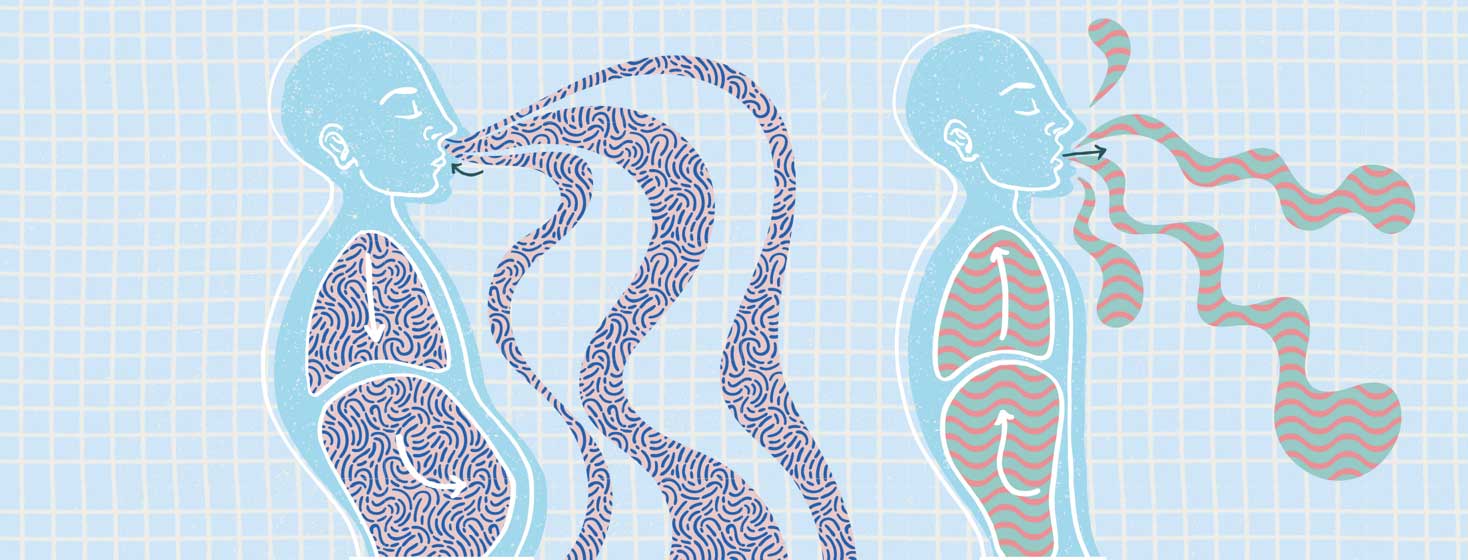Lung Exercises For People With Asthma
It’s a known fact that when you want to improve muscle strength, exercising the target muscles consistently can build muscle mass. The same is true for your lungs - just like aerobic exercise improves heart function and muscle strength, lung exercises can improve lung function and efficiency.1
For medical conditions such as COPD and asthma, lung exercises work by reducing excess stale air. This, in turn, increases oxygen levels and the efficiency of the diaphragm.1 For people who live with chronic lung conditions such as asthma, breathing is everything. When used alongside my doctor-prescribed asthma treatment plan, breathing exercises give my lungs a little extra endurance when faced with daily triggers.
Lung exercises for asthma
It’s common for people with asthma to wonder, “Do lung exercises really help?” Studies have shown that lung exercises can help asthmatics improve their overall quality of life. They concluded that “breathing exercises should be offered to all asthma patients with symptoms or impaired quality of life despite standard treatment.”2
Three effective lung exercises used by pulmonary rehabilitation specialists and other medical professionals are pursed lip breathing, belly/diaphragmatic breathing, and the Papworth method.2,3
Pursed lip breathing
This simple exercise involves breathing in normally through the nose, then breathing out at least twice as long through the mouth with pursed lips.
How it helps: Pursed lip breathing reduces the number of inhalations and has been shown to keep the airways open for a longer period of time.1
Tip: Counting to four while exhaling can help the breath go out nice and slow.
Belly breathing/diaphragmatic breathing
Have you ever really paid attention to where, in your body, your breathing comes from? It might also surprise you to learn that you can train your breath to come from another area. Belly breathing, also known as diaphragmatic breathing, encourages the body to breathe from the area around the diaphragm - the dome-shaped muscle below the lungs - rather than from the chest.1,2
To try belly breathing, either lie on your back with your knees bent and a pillow placed under the knees or sit up straight in a chair. Place one hand on the upper chest and the other hand on the stomach. Similar to pursed lip breathing, inhale slowly through the nose and take twice as long to exhale through pursed lips. The goal of this exercise is for the hand on the belly to rise and fall while the hand on the chest remains still, retraining the diaphragm to take on the tasks of filling and emptying the lungs.1,2
How it helps: Diaphragmatic breathing helps to strengthen the diaphragm, slow down breathing, and decrease the oxygen needs of the body.1
The Papworth method
An older lung exercise, the Papworth method has been used since the 1960s. It involves a combination of relaxation and breathing techniques.
How it helps: The Papworth method blends the benefits of belly breathing with stress reduction to ease breathing throughout the day. Studies show positive results on adults with asthma and the ability to control wheezing and respiratory symptoms.3
Studies are also ongoing with other varieties of lung exercises. These involve combinations of diaphragmatic breathing, pursed lip breathing, and relaxation techniques to gauge their effectiveness on asthma symptoms.3
Lung exercises take time to master
Like all new exercises, getting comfortable with lung exercises takes time and practice. Practicing for just 5-10 minutes a day made a difference in improving my breathing throughout the day. It has gradually become one of the most important parts of my morning routine.

Join the conversation